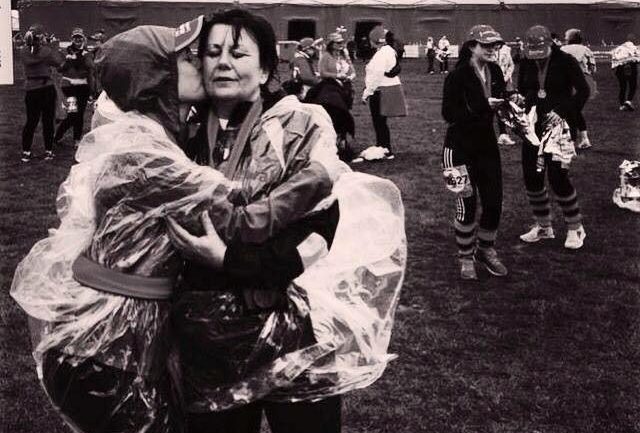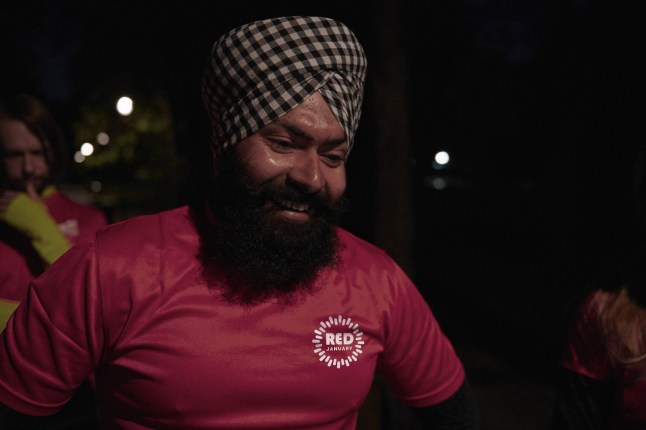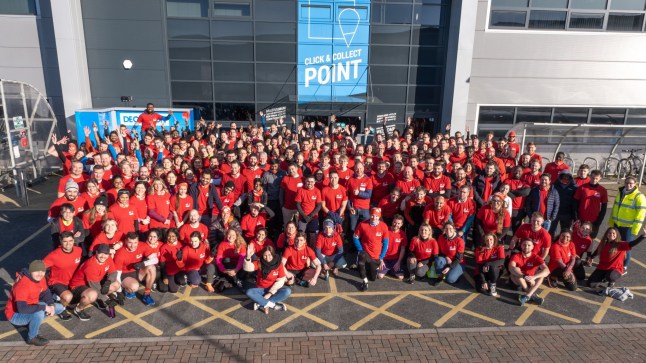

I was 34 years old when I fully understood what had happened to me.
It was a routine pregnancy appointment. The midwife was asking me all the standard questions: do you smoke? Do you drink? Do you exercise?
I answered each one without much thought. And then, she asked me a question that changed everything: ‘Have you ever been subjected to FGM?’
I said yes. And her reaction was immediate; the entire appointment shifted to become about female genital mutilation (FGM).
I was seven years old when it happened. I remember the screaming. The chaos. Several of us were there at the same time, in a house in Iran, held down, cut. There was no anaesthetic, no care, just pain.
I remember the fear and the confusion. I remember an elderly relative arranging it, paying the woman who came to do it. She was proud. She believed it was the right thing to do.
If the girls in the family weren’t cut, we would face backlash from the community. The people who push this crime on to young girls do so for male approval and their belief that it will prevent women becoming ‘promiscuous’.
For a long time, I blocked out the memory. I didn’t acknowledge what it really meant.

When I was 14, I saw a poster in a hospital toilet that featured a razor blade dripping with blood and mentioned FGM. That was the first time I made the connection to what had happened to me in Iran, but I still didn’t fully understand.
Even as I got older, I downplayed it to myself. I certainly didn’t have the anger that I feel now.
This Is Not Right

On November 25, 2024 Metro launched This Is Not Right, a year-long campaign to address the relentless epidemic of violence against women.
Throughout the year we will be bringing you stories that shine a light on the sheer scale of the epidemic.
With the help of our partners at Women’s Aid, This Is Not Right aims to engage and empower our readers on the issue of violence against women.
You can find more articles here, and if you want to share your story with us, you can send us an email at vaw@metro.co.uk.
Read more:
- Introducing This Is Not Right: Metro’s year-long violence against women campaign
- Yvette Cooper’s message to abusers and rapists: The streets don’t belong to you
- Remembering the women killed by men in 2024
- Stories about violence against women don’t make an impact – this is why
- Men – we need your help to end violence against women
- What to do if your loved one is at risk from domestic abuse
It wasn’t until I was pregnant – until I faced the reality of childbirth – that I truly reckoned with it. I had never considered that what had been done to me as a child could impact my ability to give birth.
I had never even had an examination. No one had ever checked. No doctor had ever asked. I had lived in my body for over three decades without fully understanding what had been taken from me.
That midwife referred me to a specialist, and for the first time in my life, I was shown in a mirror the extent of my own trauma. I had seen diagrams before: graphics online that illustrated different ‘types’ of FGM.
But I had never connected those images to myself. I had never thought about exactly where I had been cut or what had been removed. I sat there, stunned and terrified.
My biggest fear was that I wouldn’t be able to give birth naturally and that something would go wrong during labour. Women can have severe complications during pregnancy due to FGM, so I just kept thinking: how could I trust a body that had been so brutally altered without my consent?
Women who have been subjected to FGM face a significantly greater risk of requiring a C-section, an episiotomy (an incision during childbirth to enlarge the vaginal opening) and also of suffering post-partum haemorrhage. They are also more likely to suffer from prolonged and obstructed labour, sometimes resulting in stillbirth and early neonatal death.

I was lucky though. My son was born healthy and it was my dream birth – I was able to have a vaginal delivery, which was a really big deal for me.
Still, the fear and uncertainty tainted the experience of having my child. I was carrying a burden other women didn’t have to carry.
And the impact didn’t stop there.
To this day, intimacy is difficult. Even though I have a supportive and knowledgeable partner, the paranoia and anxiety is constantly there.
I have to silence the voice in my head that tells me talking about my body is shameful, that discussing FGM makes me unworthy of respect. That voice was planted in me as a child and it takes constant effort to unlearn it.
Every time I go for a cervical screening, the fear comes back. Will they see I’m a survivor? Will that change my results? Will it mean I have health problems later in life that other women don’t?
Today, I’m now very aware of just how much trauma FGM caused me, both physically and mentally. It’s important for people to understand it also almost never happens in isolation.
What to do if you're worried about FGM
If you are worried that you or someone you know is in immediate danger of FGM, contact the police.
If you know of a British National who has been taken abroad for FGM, contact the Foreign and Commonwealth Office on 020 7008 1500
If you are worried that a girl or young woman is at risk of FGM, or has been a victim of FGM, you can contact the NSPCC’s FGM Helpline on 0800 028 3550 or by email fgmhelp@nspcc.org.uk
For adults who want support for historic FGM, the NHS hosts national FGM support clinics for discussing health needs
FGM survivors have often been subjected to other forms of gender-based violence, such as child marriage and modern slavery.
Understanding the intersectionality of gender-based violence is crucial and that’s why I’m now channelling a lot of my anger into working with groups who really want to do something about it. I am an Advisory Board Member and Campaign Ambassador for The Vavengers, a female and survivor-led movement, which aims to end FGM and other forms of violence against women and girls.
Our ‘One Question Campaign’ asks for every woman in the UK to be surveyed on FGM through healthcare settings and for those that have been impacted to be provided with specialist mental health care and access to reconstructive surgery should survivors need it. If this was the reality, I would have been given the knowledge and tools to understand the trauma FGM left on my body much earlier in my life.

In all the interactions with medical professionals I’ve had before, FGM never came up. Had I been asked about it or even seen a leaflet in a clinic during my adult life, it might have given me the confidence to question it. It’s a really important campaign for supporting survivors here in the UK.
FGM is so often spoken about as a cultural ‘practice’, a distant issue happening ‘elsewhere.’ But it’s not a ‘practice’, it’s child abuse and it is happening here. Right now. Girls in the UK are at risk and the effects last a lifetime.
I want people to understand: FGM isn’t just a one-time event. It doesn’t end with the cutting. It lingers, shaping every part of your life from your health, your relationships, your sense of self.
Now that I know what happened to me, I feel robbed of my own body. Someone decided what could be done with one of the most intimate parts of me, and that is a void I can never fill.

The shame is not mine to carry, however – that’s why I talk about it. The shame belongs to those who did this to me.
So please, educate yourself. Pay attention. Have these conversations, have compassion and do something about it.
On top of that, support survivor-led organisations like The Vavengers, talk about it to remove the stigma and advocate for ending violence against women and girls.
Because no child should have to grow up and learn about their own body from a stranger in a hospital room, decades after the damage was done.
Do you have a story you’d like to share? Get in touch by emailing jess.austin@metro.co.uk.
Share your views in the comments below.




































